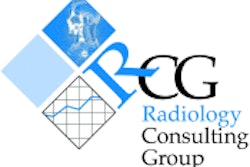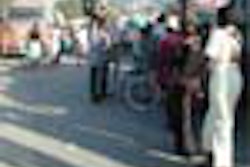SAN FRANCISCO - Imaging has always been part of the standard protocol for patients with pulmonary disorders at the Portland VA Medical Center in Oregon. But radiographs sometimes revealed unsuspected clinical findings that weren't put into any clinical context, or even shared with the referring physician. With a patient population of older male smokers who are at higher risk for lung cancer, the pulmonary specialists at the VA center developed a program that would follow up on these findings and possibly catch cancers earlier.
The idea for the URF (unsuspected radiographic findings) pathway was inspired by an unfortunate incident with a patient five years ago, said Dr. Bill Holden in a presentation at the American Thoracic Society meeting on Tuesday. While a URF was found, it was not immediately addressed. Further study was thwarted when the patient was lost to follow-up. The person then returned to the hospital three years later with advanced-stage lung cancer.
"That led us to try to find a way to address this issue," Holden said. "We became interested in defining the efficacy of the pathway and the cost of it."
The URF pathway begins with a chest radiograph. If a URF is found, the information is passed on to a pulmonary nurse specialist. The data is then collated and the pulmonary consultation team, including the primary care physician, decides on a course of action.
"We may not agree with the radiologist and say that there is nothing to be concerned about," Holden said. On the other hand, further work-up may be in order. Old films will have to be obtained for comparison purposes, and immediate diagnostic tests should be done. Finally, the group must determine the stability of the disease over time.
To date, 730 URF have been evaluated with at least 18 months follow-up. Small pulmonary nodules made up 78% of the primary unsuspected findings on x-ray. Almost half of these findings (49%) were deemed clinically significant and led to a specific diagnosis. In the case of 38% of primary unsuspected nodules, further study proved to be clinically insignificant.
In 73% of these cases, the clinically unsuspected diagnosis was either stage I or II lung cancer. Metastatic cancer was diagnosed in 26% of the cases.
The pathway does have a fairly hefty price tag associated with it, Holden pointed out. The group calculated that the additional cost of involving the pulmonary nurse specialist was $17,160 a year. The annual cost incurred for including the primary care physician was $11,440. In the study, the 88 lung cancers that were found cost an extra $500 per case.
"About half of the URF are clinically significant and lead to a specific diagnosis or early-stage cancers," he said. "The personnel and monetary costs are significant. But what we’re doing is addressing the delays that often occur within the system. These [imaging] exams may have been done at some point. With the pathway, these studies are done sooner. It’s a cost-effective way to monitor high-risk populations for early-stage lung cancer."
By Shalmali PalAuntMinnie.com staff writer
May 24, 2001
Click here to post your comments about this story. Please include the headline of the article in your message
Copyright © 2001 AuntMinnie.com



















